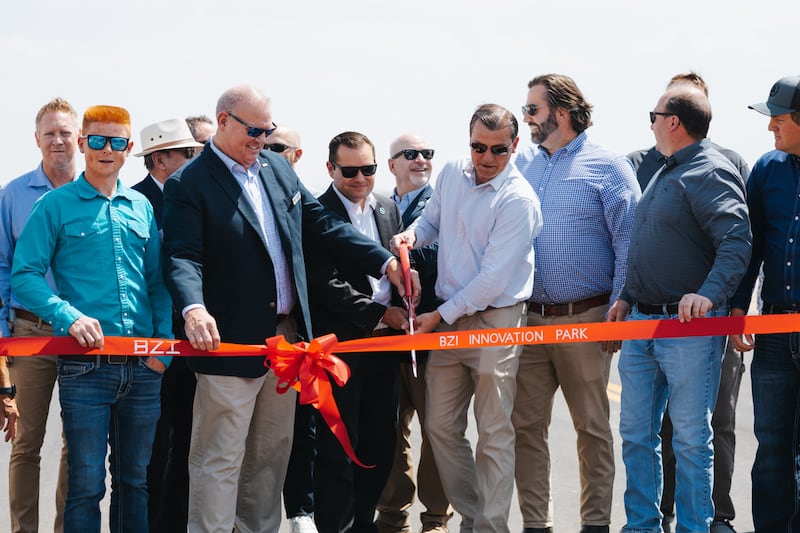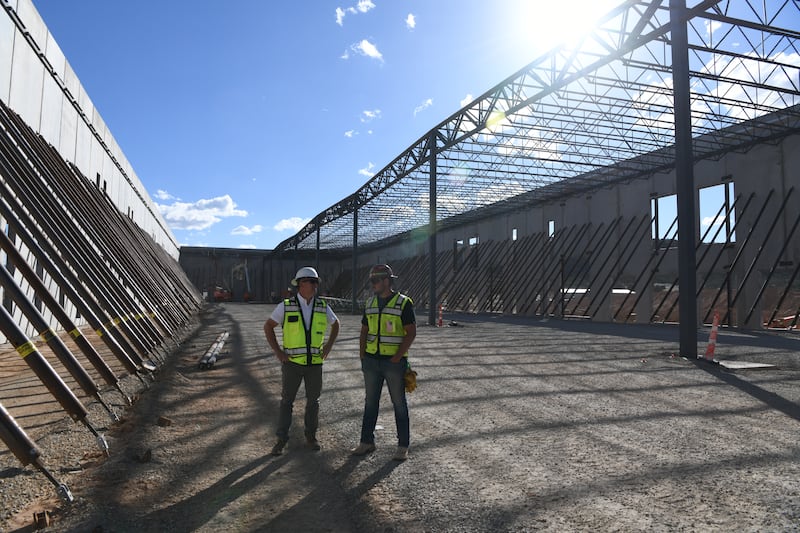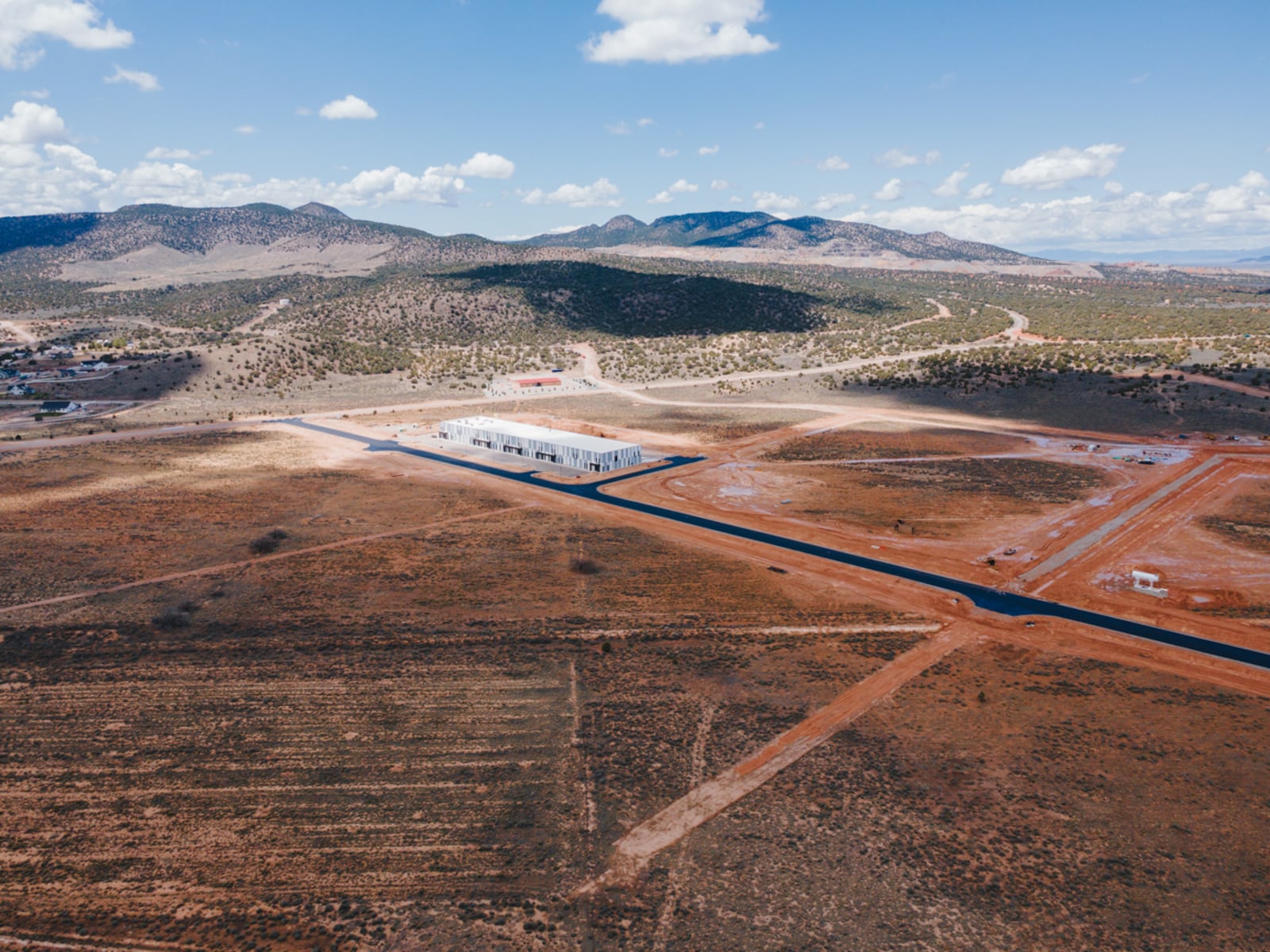This story appears in the August 2025 issue of Utah Business. Subscribe.
Each of Utah’s 29 counties offers unique advantages for businesses and talent alike. Let’s visit Iron County.
Lund, Utah, is a ghost town. Thirty-three miles from Cedar City, it was once a train station stop for travelers on their way to Utah’s national parks. Today, there is a railroad sign and a single habitable house.
The Los Angeles and Salt Lake Railroad, later Union Pacific, ran the line between Lund and Cedar City. Forty 11-passenger auto-stages ferried tourists closer to Utah’s natural wonders. The last passenger trains stopped in 1969, but rail lines have stayed relevant, attracting business to Iron County’s larger population areas like Cedar City.
In 2017, Danny Stewart, then the economic development director for Cedar City and Iron County, started to hear rumblings of “inland ports” in Salt Lake City. Knowing his county’s economy heavily relied on transportation infrastructure, the topic “instantly grabbed [his] attention.”
“Most of the success we’ve had in Cedar City, Iron County, was based on our geographic location. Proximity to major Western markets — one day’s trucking to LA and Phoenix — is a big deal,” he says, explaining that an inland port area, dedicated to improving and facilitating transportation, felt like the perfect fit for the county’s economic strategy and a needed upgrade for existing railroads.
A waterless port?
Even with roads and rail connecting Iron County to other economic centers, local manufacturing companies struggled to fully utilize the transportation options, specifically the railroad, because there was no way to move goods between road and rail.
“I would regularly get calls from companies throughout the region saying, ‘We need to unload something off the rail,’” Stewart recalls. “Transloading is something we seriously started looking at about the same time I was hearing talk of the inland port concept. I said, ‘It makes sense for us to do transloading here. I know there’s a business case for it. Would partnering with the Inland Port Authority help us?’ It certainly has.”
Since the Utah Inland Port Authority (UIPA) approved the Iron Springs Inland Port Project Area in 2023, two railroad transload facilities have opened for business. These facilities help local companies move steel, lumber, food-grade and fuel oils, and mined materials from train to truck and back again.
In the last two years, Stewart says BZI’s RailSync transload facility has processed 600 rail cars, unloading over 100 million pounds of materials. A recent press release states that RailSync has taken more than 2,500 inbound semi-truck loads off highways between Salt Lake City and Phoenix in that time. Transloading capabilities have already begun attracting companies and jobs to the area.

Transloading costs
Since helping launch the Iron Springs Inland Port Project Area, Stewart has transitioned into a new position as the associate VP for regional project area development with UIPA. In partnering with UIPA, Iron County’s inland port development is fast-tracked for success.
Under the jurisdiction of UIPA, instead of the county collecting 100 percent of all new taxes and distributing them regularly, the county will only collect 25 percent of the taxes on development in the area for 25 years. The other 75 percent goes to UIPA, which then returns it to businesses in the project area to assist them in development.
“We’re reinvesting it back into that area in the form of roads, water, sewer, fiber — whatever it takes to make it more valuable,” Stewart says. “At the end of 25 years, that new value will go back to the regular tax entities and our agreement ends.”
Although UIPA oversees 14 total project areas, all increased tax from the Iron Springs Inland Port Project Area stays in Iron County to support the community. There is no statewide pot for redistribution; everything is invested right where it was generated.
Use all available resources
David Johnson, the current economic development director for Cedar City and Iron County Economic Development, says the benefits of having the rural inland port in Iron County are unquantifiable.
“I don’t think any of that would have been possible had it not been for the Utah Inland Port Authority,” he says, explaining that he only sees current development and economic prosperity continuing to snowball.
One of the first companies to join the Iron Springs Inland Port Project Area was BZI Steel, a steel erector and fabricator that works on large building projects across the nation. Previously, BZI had been trucking steel to its fabrication shop in Cedar City but was in search of a better, more efficient mode of transportation.

Once initiating the property finding process, Drake Howell, project executive at BZI Innovation Park, says the company acquired 820 acres along the Union Pacific Railroad and began working with the county to build a transload operation.
“We’ve had a vision of developing the rest of the acreage out and making it available to other industries and manufacturers to attract them to Cedar City and Iron County, lifting the whole economy,” Howell says. “Our partnership with the Utah Inland Port Authority … stretches our dollars to make development of this scale possible.”
Phase one of the BZI Innovation Park was recently completed, opening 330 acres for business, including all utilities and roadways completed and operational. Howell says his team is excited to be in “full business recruitment mode,” but without UIPA’s support, the story could have been very different.
“If the port hadn’t been involved, there would likely be a BZI operation at some scale but probably just a private operation,” he says. “With the port, it has opened the door to serve not only BZI but the economy and public as a whole.”
Chugging toward the future
What began in the ’20s for tourism is now the basis for Iron County’s economic present and future.
The project area did not just happen, though. It took leaders like Stewart and community support. “Project areas are only established based on requests from the local communities, support from elected officials, and recommendations of economic development staff,” Johnson says. “UIPA allowed us to better tell our story of what a manufacturing hub we are and how diverse our economy is, even though we are historically a rural community.”

